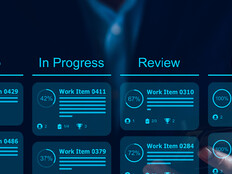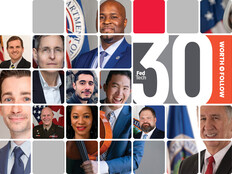Employee Buy-In, Good Planning Trigger Successful IT Modernization
Even as federal agencies pick up the pace of IT modernization, it’s important to remember that the fast lane is not always the road to success. Having a proper map is the first step on a long and complex journey.
The recent enactment of the Modernizing Government Technology Act — and the establishment of the Technology Modernization Fund (TMF) — has triggered a new rush of planning. But care needs to be taken before undertaking new projects, or modernization becomes little more than throwing money at a problem without actually fixing it.
I’ve conducted interviews with a number of federal and state government CIOs who have been successful in modernizing their IT, and I’ve studied successful private-sector modernization. Certain paths to success emerged in all cases.
First, an organization must prioritize its modernization goals. In addition to reducing the amount of money spent on maintaining legacy equipment, modernizing can dramatically improve cybersecurity and provide access to newer technologies such as artificial intelligence. If an agency doesn’t select a primary goal and tries to do everything at once, it won’t get the optimal bang for its modernization buck.
SIGN UP: Get more news from the FedTech newsletter in your inbox every two weeks!
Keep Employees in Mind During Tech Upgrades
At the same time, agencies must watch the big picture. As the public sector becomes more decentralized, the planning perspective is shifting from the organization to the programmatic level.
Successful modernization, however, requires that planning remain at the enterprise level to create common solutions that work across the organization. (It bears noting that agencies applying for TMF funding are given extra consideration if their projects develop common solutions for the entire organization.)
Paradoxically, the fastest way to lose momentum on a modernization project is to try to implement a “big bang” at the enterprise level. Agencies must focus the actual delivery of benefits at the departmental level, where implementation is easier and momentum can build for future modernization initiatives.
Every CIO I spoke to took that advice one step further: They focused their modernization efforts on people, before addressing the technology. Even the best-planned modernization process can drain the enthusiasm of major stakeholders. The best way to counter this is to continually communicate the value of the modernization — not just IT benefits and cost savings, but the positive impact on the organization’s broader objectives.
Consider Long-Term Benefits of IT Modernization
Make no mistake, modernization is expensive and requires the commitment of resources to achieve both short-term and long-term benefits. Looking at the short-term benefits of modernization makes sense, but agencies should also consider out-year benefits that can result from cloud migration, improved cybersecurity, agile development, mobile adoption, cognitive computing and more.
Modernization is worth the effort and can result in substantial benefits, both immediately and long-term. It is incumbent upon an agency to be aware of the keys to success to achieve these benefits.









